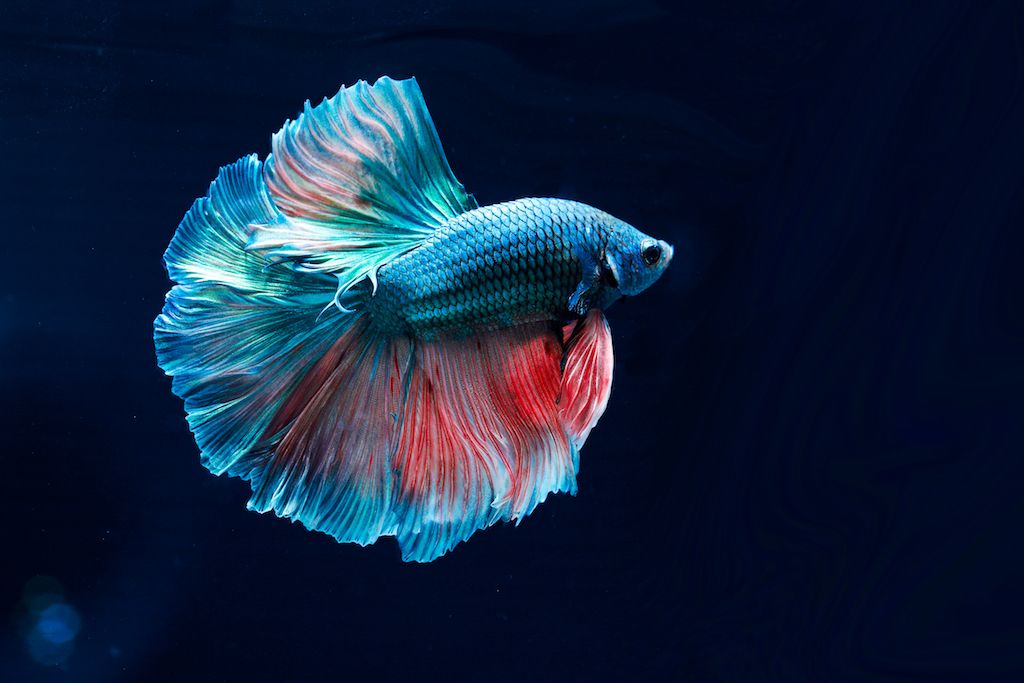How to Introduce Betta Fish to a Community Container Securely
How to Introduce Betta Fish to a Community Container Securely
Blog Article
All Concerning Betta Fish: Comprehending Their Unique Demands, Behavior, and the most effective Practices for Optimal Treatment
Understanding the special needs and habits of Betta fish is essential for any kind of aquarist looking to supply optimal care. These exciting animals, indigenous to the warm waters of Southeast Asia, display distinct territorial tendencies and call for specific environmental problems to thrive. From selecting the right container size to acknowledging possible health problems, numerous factors substantially affect their well-being. As we discover these elements even more, the effects for both novice and skilled fish caretakers become significantly evident, increasing inquiries regarding just how best to suit these remarkable fish in our homes.
Betta Fish Summary
Although commonly appreciated for their vivid shades and flowing fins, Betta fish, scientifically called Betta splendens, are complex creatures that require certain care to flourish. Originating from Southeast Asia, these freshwater fish are understood for their territorial nature and distinct behaviors. Betta fish exhibit sexual dimorphism, with males presenting a lot more brilliant colors and longer fins than women.
Their aggressive propensities, specifically amongst males, necessitate mindful factor to consider when real estate them. Bettas are commonly kept in single-specimen tanks to avoid territorial disputes. Nonetheless, they can exist side-by-side quietly with certain suitable varieties in larger community tanks, gave the setting satisfies their requirements.

To make sure optimum treatment, aquarists must understand their distinct behavioral qualities, nutritional demands, and environment needs. betta fish. With correct attention, Betta fish can exhibit their vibrant personalities and thrive in a well-kept aquarium setting
Natural Habitat and Environment
Betta fish thrive in a varied variety of natural habitats, primarily located in the superficial waters of Southeast Asia, including rice paddies, swamps, and slow-moving streams. These environments are characterized by cozy temperatures, generally in between 75 ° F and 82 ° F(24 ° C and 28 ° C ), and a pH degree ranging from 6.5 to 7.5, which is perfect for their health and health.
In their natural environments, Betta fish are accustomed to thick plants, offering both shelter and reproducing grounds. The presence of plants such as drifting water lilies and thick yards not just provides protection from killers but additionally adds to the oxygenation of the water, which is important for their respiratory system requirements. Additionally, these settings typically have areas of still water, enabling Betta fish to exhibit their all-natural behaviors such as bubble nesting.
Recognizing the natural environment of Betta fish is essential for fish tank lovers. Reproducing these conditions-- via water temperature, pH equilibrium, and the inclusion of real-time plants-- can considerably boost the overall wellness and longevity of these fascinating fish, guaranteeing they flourish in a home fish tank setting.
Social Behavior and Communications
Comprehending the social actions and communications of Betta fish is essential for successful aquarium monitoring. Betta fish, or Siamese battling fish, are known for their special behavior characteristics, identified mostly by territoriality and aggression.
Conversely, women Bettas show less aggressive behavior and can exist together in teams, referred to as sororities, if presented appropriately. It is important to monitor their interactions closely, as hierarchy and prominence can lead to problems. Comprehending the dynamics within a Betta community is vital; establishing concealing areas and making sure adequate area can reduce aggression.
Furthermore, Betta fish might likewise show curiosity and social behaviors in the direction of various other species. While they can coexist with particular non-aggressive storage tank mates, it is vital to choose suitable varieties to prevent anxiety and aggression. Overall, identifying these social communications is essential to fostering an unified fish tank environment for Betta fish.
Essential Treatment Guidelines
Providing appropriate treatment for Betta fish is essential to their wellness and well-being. Routine water adjustments-- approximately 25% regular-- aid maintain water high quality.
Betta fish call for a suitable tank dimension; a minimum of 5 gallons is advised to offer appropriate room for swimming and hiding. Include designs and plants to produce a revitalizing environment, but prevent sharp items that can harm their delicate fins.

Last but not least, make sure the storage tank is geared up with a filter to keep the water tidy, however utilize a gentle filter to stay clear of solid currents that can worry the fish. By following these essential treatment guidelines, owners can advertise a healthy and balanced and dynamic Betta fish.
Common Health Issues and Solutions
In the care of Betta fish, recognition of typical health concerns is necessary for preserving their well-being. One widespread problem is fin rot, frequently triggered by inadequate water high quality or microbial infection. Symptoms consist of torn or discolored fins. To deal with fin rot, boost water problems and think about making use of a broad-spectrum antibiotic.
One more common condition is ich, a parasitical infection defined by white places on the fish's body (betta fish). Treatment includes increasing water temperature and their explanation including aquarium salt to the storage tank, as this can help get rid of the bloodsucker
Swim bladder disorder is likewise regularly observed, causing buoyancy troubles. This condition might arise from overfeeding or constipation. A fasting duration of 24-48 hours, adhered to by a diet of blanched peas, can supply relief.
Finally, bettas might deal with velour condition, indicated by a gold dust-like appearance on their skin. Therapy typically needs medicine specifically developed for outside bloodsuckers, along with improved storage tank health.
Regular tracking of water criteria, maintaining a clean atmosphere, and giving a balanced diet are vital safety nets. By resolving these health problems without delay, Betta fish can lead healthier, more lively lives.
Verdict
In see post summary, successful betta fish treatment needs an understanding of their distinct needs and behaviors. Regular surveillance read the article of wellness and water top quality, along with a well balanced diet plan, contributes to the long life and vibrancy of betta fish.
Report this page